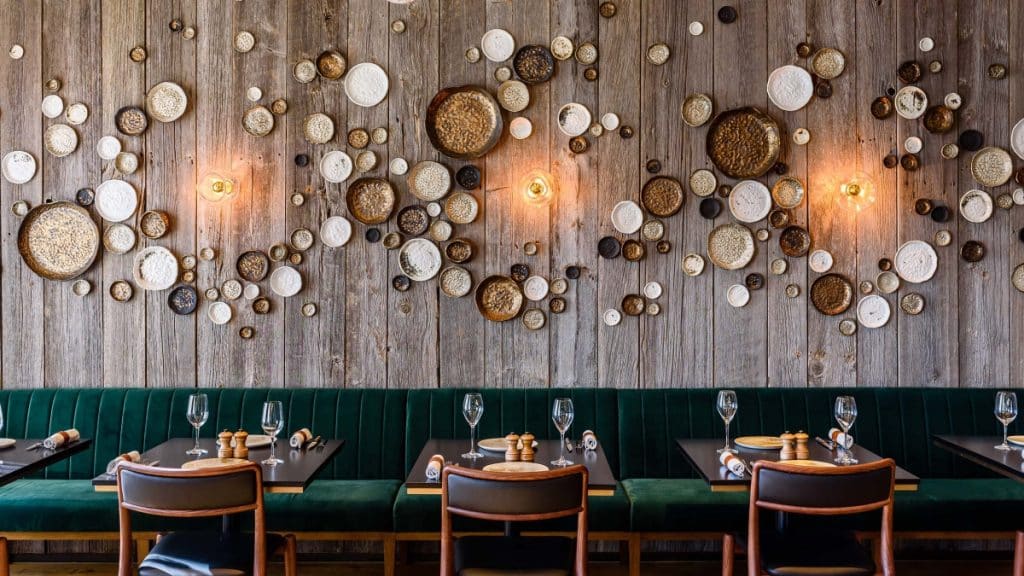Ambiance and setting directly influence a customer’s experience in a restaurant. Every deliberate detail, stretching from the entrance to the dinner table, plays a critical part in molding a diner’s perception and enhancing their enjoyment. Consumers are looking for more than just a meal – they want a comprehensive sensory experience, placing greater emphasis on restaurant design. A well-curated restaurant attracts clientele while enticing them to linger, potentially increasing the likelihood of repeat visits from valuable customers. This article analyzes different design aspects of a restaurant and their significant influence on the dining experience– the layout, seating arrangements, atmosphere, decoration, as well as the implementation of technology. The following sections will explain how strategically integrating these components into a restaurant can either charm or deter potential customers. The delicate balance between a restaurant’s visual attractiveness and pragmatic design greatly contributes to the establishment’s atmosphere; and therefore, determines the success of a business.
Layout and Seating
Tables and chairs should be positioned to encourage the smooth flow of service, while enhancing the ambiance for guests at a restaurant. A thoughtfully arranged space allows for smooth operation such as in the Cocody restaurant, thereby ensuring efficient service and a smooth dining environment for patrons. Optimal seating plans are intentional in their designs; they provide privacy, encourage intimate conversations, and leave enough room to avoid the discomfort of close quarters. A layout that has not been carefully planned may provoke a sense of disarray, make movement awkward, and encroach upon the personal space of diners, leading to a subpar experience. Insightful restaurateurs understand that the spatial arrangement of furnishings is not only a matter of convenience; it sets the atmosphere for an evening of satisfaction or frustration.
Ambiance and Decor
The atmosphere and visual appeal of a restaurant are intrinsic to the satisfaction of its customers. When entering an establishment, individuals are immediately enveloped by its ambiance—a synergy of elements such as well-chosen furniture, thoughtfully curated artwork, and strategic lighting that culminate into a memorable experience. An ambiance that resonates with diners can make them feel like they are a part of something special—each detail in the restaurant’s decor contributes to a narrative, setting the stage for the meal to come. For example, subtle touches like the warm glow of a candle, the placement of a vase, or the comfort of a chair can significantly elevate the customer’s contentment and willingness to linger. By melding these visual and tactile components just right, restaurateurs create an ambiance that sets the tone for the entire dining experience.
Lighting and Music
The strategic interplay of lighting and music within a restaurant’s design is indispensable to curating the desired atmosphere. Carefully controlled lighting can transform every dining area: soft, dimmed lights typically invoke a serene or romantic vibe, whereas a brightly lit setting infuses vitality, beckoning a more vivacious scene. Meanwhile, the auditory backdrop—the choice and volume of music played—should compliment the dining experience, carefully setting a sonic tone that aligns with the restaurant’s theme. Gentle, classical melodies might accompany an elegant dinner, while upbeat, contemporary tunes could energize a casual, bustling eatery. Together, these sensory elements build the thematic narrative of the restaurant, subtly influencing diners’ moods and behaviors to enhance the overall dining experience.
Menu Design
A menu should serve as a guide through a restaurant’s cuisine; it can potentially make or break the dining adventure. An effective menu design boasts a format that is straightforward, enabling customers to effortlessly move through courses and options. Sections should be clearly defined and items described with enough detail to entice, yet not so much as to confuse. By providing a balanced range of choices, restaurants cater to diverse palates and dietary preferences, ensuring everyone at the table finds something to their liking. A menu that is disorganized or overly complex can cause guests to feel flustered, detracting from the enjoyment of the meal. A menu should be constructed to reflect the establishment’s identity and supplement the customer’s satisfaction.
Technology Integration
Restaurants today are implementing several advanced technologies to elevate the customer experience. The convenience of making online reservations for example, eliminates the uncertainty of wait times. Mobile ordering addresses the desire for quick service, allowing customers to order with a few taps on their devices. The adoption of interactive menus, through tablets or smartphone apps, offers an engaging way to explore dining options. Digital displays for menus or promotional items provide visual appeal and can be updated effortlessly to reflect daily specials or seasonal dishes. These technological enhancements, when seamlessly integrated into a restaurant’s design, not only streamline operations but also cater to the modern diner’s expectations for efficiency and entertainment. Such innovations represent a significant shift in how customers engage with the culinary world, highlighting the necessary incorporation of technology in dining experiences.
Restaurant design is not confined to aesthetics; it is fundamental to shaping the customer experience. Strategic space planning ensures smooth service and delivers comfort, while a careful choice of decor and ambiance enhances the patrons’ sensory experience. Lighting and acoustics set the mood, while a clear menu presentation can confidently steer patrons through their culinary journey. When technology is effectively assimilated into this framework, it elevates convenience and customer engagement. Combined, these factors construct a narrative that invites customers into a distinct story with each visit, demonstrating that a memorable dining experience lies in the harmony of aesthetics and functionality. Proprietors and designers who grasp these nuanced features can set their establishments apart in a competitive market where the dining experience is as crucial as the cuisine itself.
